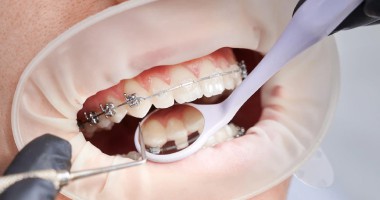It’s never too late to have a lovely smile, and neither does it ever go out of style Dental braces can be used to fix teeth that aren’t aligned properly. It is a common approach to treating orthodontic problems.
Every patient has a unique smile and set of dental issues. You can begin orthodontic treatment as early as age 7. Age is not a factor while choosing orthodontic braces. You can receive teeth braces at any age if you have healthy teeth and gums.
By straightening your teeth, dental braces can improve your appearance. If any of the following apply:
Your teeth are moved with braces by applying consistent pressure over an extended period of time. Your jaw gradually changes shape to conform to this pressure.
Adult braces- It’s never too late to get your crowded, spaced-apart, or crooked teeth fixed in order to boost your self-esteem and confidence! Adults frequently seek orthodontic treatment because of issues that go far beyond aesthetic considerations. Specialized orthodontic treatment may give you a smile that looks and feels terrific, whether your goal is to improve the appearance of your smile or address underlying problems with your bite and jaw alignment.
Depending on the alignment of the teeth and a number of other criteria, the cost of braces and Invisalign braces varies greatly from person to person. The cost of braces and aligner treatment is not standardised. Most people are concerned about the cost of treatment when told they need orthodontic treatment with braces or wire. The cost of orthodontic treatment depends on the kind of dental braces the patient chooses.
Orthodontic devices used to straighten teeth and correct bite issues include ceramic braces, often known as transparent braces. They are made up of ceramic brackets that are transparent or tooth-coloured and are fastened to the front of your teeth using rubber bands and wires of the same colour.
As ceramic braces are more covert than traditional braces on your teeth, many individuals choose them. If you’re considering braces and don’t want to feel self-conscious about wearing them, this can be a significant advantage.
Metal braces are an easy, efficient, and amazing way to straighten teeth, close gaps, correct overbites, or correct underbites. However, a lot of patients are really unsure of what to anticipate from orthodontic treatment or the differences between the potential solutions.
When most people hear the word “braces,” they picture metal brackets and wires made of stainless steel that are fastened to your teeth with rubber bands. Many patients love personalising their braces by choosing from the many different colours of these rubber bands that are available.
Traditional braces consist of little “wings” that are secured in place by strong elastic ties (these are the colours you see on the braces). Every brace has these elastic ties on them, which increases friction between the brace and the wire. The brace must glide along the wire for teeth to move. It takes more energy to move teeth because the elastic ties’ friction slows down this “slide.” As a result, tooth movement is slower and more painful. Additionally, the elastic ties lose their tensile strength over time and their capacity to fully secure the wire in the bracing. In order to replace the ties with new ones, appointments must be made more frequently.
Self-ligating braces are distinct from traditional braces in that they do not contain elastic ligatures. In other words, there aren’t any metal or elastic “ties” because they aren’t required. Instead, self-ligating braces hold the tooth-aligning wires in place via a door mechanism that may be opened and closed. As a result, there is significantly less friction between the wire and the braces. As a result, teeth move more quickly because the braces can move freely along the wire (metal bracket on metal wire). Additionally, this idea for more comfortable tooth movement with greater mobility. Because there is less friction between the wire and brace, lighter forces are needed.
The Damon technique straightens teeth more quickly with fewer modifications and less pressure by using special high-tech wires. Because Damon braces are self-ligating and don’t require elastic or metal ties, they differ from conventional braces that do.
